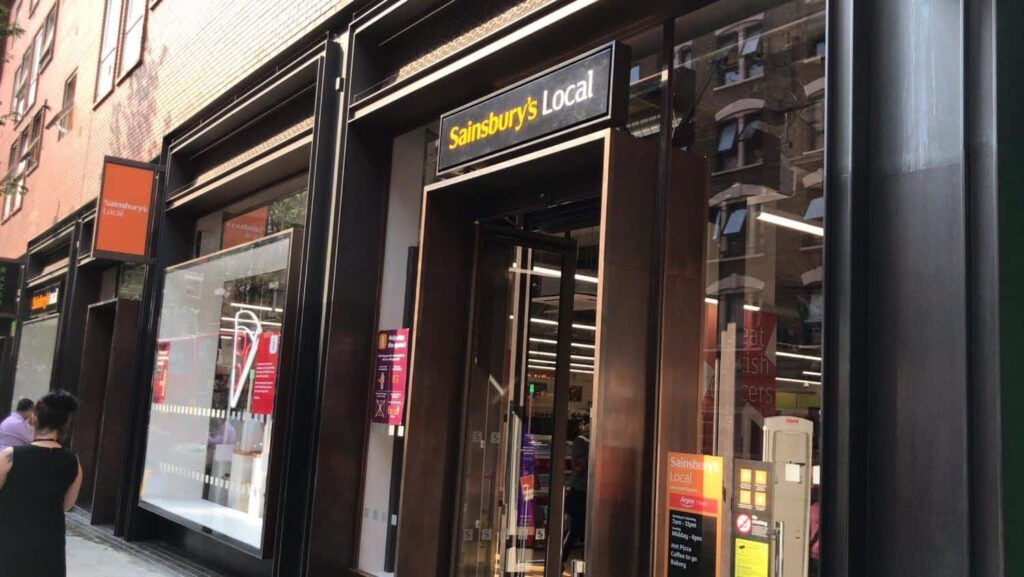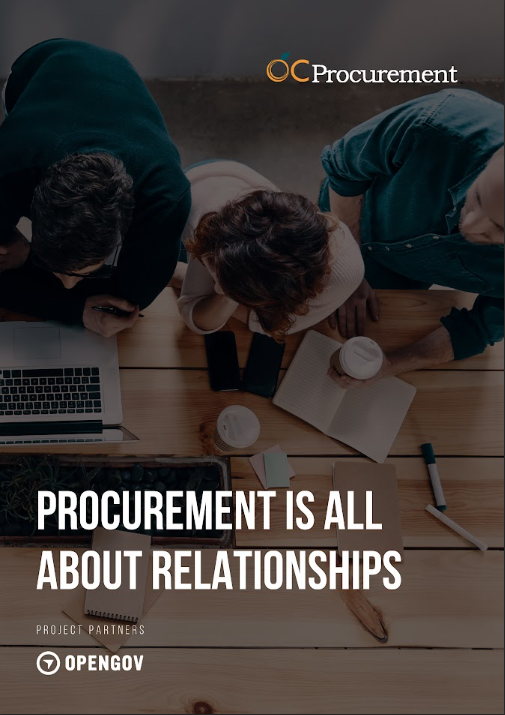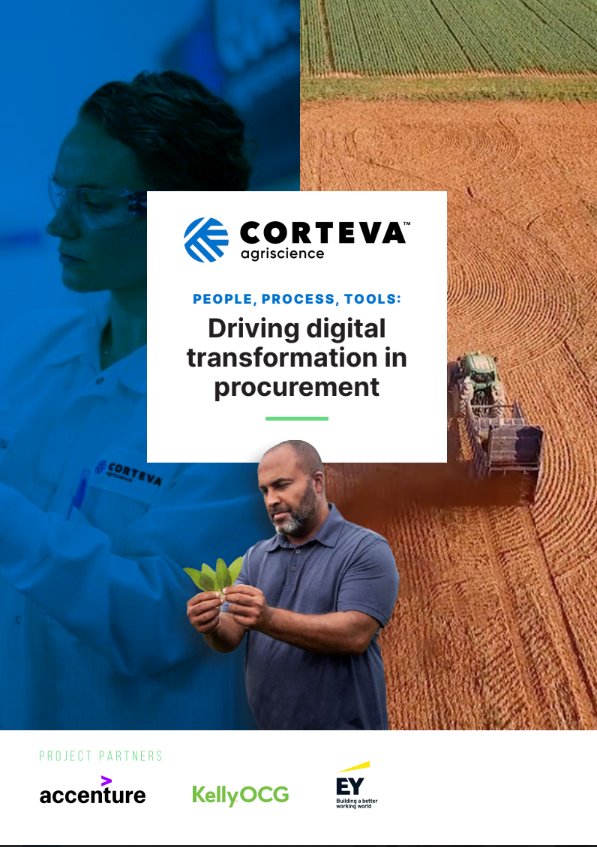The United Kingdom went into full-scale lockdown on March 23, 2020. For many enterprises, the stresses of a locked-down Britain, battling the virus COVID-19, centred around keeping businesses alive amid dramatic shifts in working practices. For others, it was a very different challenge. For the big supermarkets, lockdown represented an enormous logistical spike in operations during a time of unprecedented uncertainty. Supermarkets were literally feeding the nation.
Sainsbury’s and its newly established unified, multi-brand Technology, Digital & Data Division, Sainsbury’s Tech, already had one eye trained on any potential disruption caused by Britain’s exit from the EU and so, the lockdown meant it could adapt and accelerate some of these plans. “When the word came that we were going into lockdown, we’d been anticipating it,” explains Phil Jordan, CIO of Sainsbury’s. “We spent a lot of time thinking about what policy-makers were going to do and the impact that might have for customers, colleagues and our complex supply chains across multiple countries. We’d become attuned to that process as a result of planning for all the various Brexit milestones of the last few years.”

Sainsbury’s Tech
Sainsbury’s Tech was launched in the autumn of 2019 and it is the customer who lies at the heart of this new division headed up by Jordan to provide the multi-brand, multi-channel capability that powers the different brands: Argos, Nectar, Tu clothing, Sainsbury’s Bank, Habitat and, of course, Sainsbury’s, “by putting brilliant technology into the hands of brilliant people”, Jordan said upon its launch. “Sainsbury’s Tech is all about giving customers great experiences, leveraging data like a start-up, but at a scale they can’t offer while fostering a culture of experimental curiosity.”
“It’s unprecedented to run a business like ours, a complex business that requires so much day-to-day intense transaction, all remotely,” Jordan explains. “We had to maintain normal working conditions to an extent for people who were in stores – the vast majority of the people who work for Sainsbury’s have been in store during the pandemic – with social distancing and various other things we had to do, to keep colleagues and customers safe. And doing all that while everybody else who provides a support service to the stores were not working in the same location. To be fair, we’ve done an incredible job, because we pivoted the whole company to work from home in a couple of weeks, and at no point did any of that ever cause any disruption to the stores.”
Innovation wasn’t limited to digital operations, either, as colleague and customer safety forced stores to adapt ways of working, including the checkout experience, and every aspect of where customers interact with colleagues, to try and make it as safe as possible. “We were doing that sometimes with very little information as to what was needed and what might happen,” Jordan explains. “By just being brave enough to do the right thing and iterate and innovate as we go, and make lots of small changes to make sure we’re reacting to customer needs across all of our estate, such as Argos flipping into being Prepay only, and then Pick-up In Store, for everything. And then scaling our Fast Track and our Delivery teams to try and reach all the customers. Seeing sales numbers much higher than expected without any stores being open is a great example of how we’ve innovated.”
Mark Lowe is Senior Software Engineer, Retail & Labour Management. “COVID-19 represented a massive challenge in keeping the stores running for our customers, getting the stock out on the shelves, supporting our colleagues etc.,” he tells us. “And so, we looked at streamlining operations quickly wherever we could. We needed to create more shelf space for high volume lines and temporarily removed certain non-core lines, helping dress our stores for our customers to get what they wanted, quickly. We also had a massive shift in our store colleagues’ working patterns as well. As you’ll be aware, Argos and Habitat stores were closed and many of those colleagues were able to come and help out in Sainsbury’s stores as customers’ shopping patterns changed.”
The fact that the entire store installation team was homebased pretty much from the middle of March, meant working remotely with suppliers at the staging centre in Milton Keynes. The Store Installations team provides support for store openings, closures, refits and expansions and following the decision to lockdown had to instantly respond to changes to store layout and the numbers of checkouts etc., while at the same time respecting distancing measures in undertaking engineering work. Mark Garstang is Senior Engineering Manager, Installation Services, which installs most of the technology to new stores across the estate. During lockdown the team re-directed its efforts in supporting the increasing demand for groceries online, Click & Collect and devices for colleagues instore. “All the way through this, we remained open and had a small set of engineers out in the field reacting and responding to some of the stuff we had to do just to help our store colleagues,” Garstang explains. “We had to learn how to use Teams and technology more to work remotely with suppliers. We also had to learn how to work under the new social distancing policies and procedures coming into play to allow us on site to undertake work. We became part of the critical force helping the store teams pivot towards what was needed to support our colleagues and our customers in stores, such as improving our till capacity while the volume of our groceries online went through the roof.”

As the UK started to panic buy, Jordan and his colleagues had to keep operations agile and scalable to unprecedented demand. “My fear was always about service availability at that point,” Jordan explains. “We were just in a period of crazy consumer panic. People buying more toilet rolls than they knew what to do with and various other things. It’s like Christmas and Black Friday happening at the same time and out of the blue. My fear is always that we must run the business at high intensity, 24/7 and we can’t afford to fail. And I’m delighted to say we prevailed, and the technology stood up amazingly well.”
Colin Smith, Head of Engineering for Logistics outlines those early days of lockdown. “It was a case of how quickly the business could respond to panic buying. We had an immediate demand placed upon us from our logistics operations team for more capacity. Bear in mind this happened pretty much in the space of a few days, where traditionally we prepare for Christmas 6-8 months in advance. And, to the credit of my team – ‘my family’ – we responded fantastically in an awesome way. We mobilised five additional facilities in the space of six days to deliver circa two million additional cases into the network to meet the demands placed upon the stores. Traditionally that would have taken one site, around three weeks, but we turned around five sites in the space of six days. Don’t get me wrong, it was incredibly hard, and the team worked really long hours, but it’s really shown in how we got behind Feeding the Nation, by supporting our store colleagues on the front line.”
As digital operations spiked as a result of raging demand, it was essential to keep that digital infrastructure strong and safe. Simon Grant, Senior IS Manager, Product Assurance and Security Testing. “Our first priority was the people and the team. Very quickly after going into lockdown, there was clearly a need to support the broader business. People had to adapt and change their ways of working to perform their operations, which didn’t quite work in a remote setting. Some examples being systems you could only access by being connected directly to the Sainsbury’s network and a requirement for a business to have connections from home. Clearly that can open more risks, so our teams were really busy consulting on these immediate needs to ensure we could enable our colleagues to work effectively, whilst understanding what risks that might present, and making sure we had the right controls to keep Sainsbury’s and our customers, colleagues and data, safe. This was particularly the case with our Contact Centres, moving these normally static teams to a remote working model was their biggest challenge as they had never worked in this way before.”
Once the panic buying started to subside, it was customer channel preference that started to shift, affecting scale while the operations teams were working from home. “Given that none of our teams are sitting together or with the business stakeholder, how do we hear and interpret and deliver on this real adaptability and agility?” Jordan posits. “So, if the first wave of concern is can we keep it running? The second wave becomes ‘Are we agile enough? Are we adaptive enough, given that we’re remote working, to meet the demand of change?’ COVID-19 has seen endless innovation in digital, as we scaled from 300,000 to 700,000 delivery slots a week.”

Sarah Hirtenjohann is Senior Supplier Relationship Manager at Sainsbury’s and it was her job to keep relationships with tech suppliers open and delivering, as they helped to support the growing digital operation. “It was clear to us, before lockdown started in March, that it was coming. So, we took an opportunity in the middle of February, whilst we were all still together, to create a 90-day plan for what we wanted to focus on, and deliver, as a team, until the end of June.”
Caring for the community
One of the biggest concerns, nationally, was centred upon those members of the community who would find lockdown especially difficult and it was also a high priority for Sainsbury’s. Myles Noton, Senior Engineering Manager, Discover, Decide and Loyalty. “We reintroduced a feature called Recurring Slots, prioritising customers to book recurring slots every week. A lot of that work was borne out of seeing the numbers we saw during lockdown, and analysing what people were doing,” he says. “The biggest part of the work we were doing was aimed at the elderly, disabled and vulnerable customers; we wanted to prioritise those, in addition to allowing other people to book slots. Obviously, there were many teams around Sainsbury’s trying to work out how to get more Delivery and Click & Collect capacity. How do we make sure elderly, disabled and vulnerable customers are prioritised? How do we make sure everybody else can get a Click & Collect slot?”
Jordan is particularly proud of how Sainsbury’s identified and responded to the most vulnerable members of the community. “We’ve taken a customer base and said: ‘Actually, we’re going to assess a vulnerability qualification for the data we know about you and come back to you directly and say we think you deserve, and you need, this delivery slot’. That’s incredibly innovative. We were the first to do that. So, in all aspects of our business model, we’ve had to be innovative because there’s been such a clear need to apply change to what is a pretty well-established business and to do it quickly and to take some risk in doing it as well. I think it’s absolutely bred a huge amount of innovation. And I’m delighted to say that we’ve done that in a very Sainsbury’s way.”
“We used our own data to establish and qualify who was elderly, disabled or vulnerable and offered delivery slots to them as a priority. We were the first to do that above all our competitors, and before the government had given us any data. We also knew that some of our competitors, some of whom are considered to be digital-first grocery online providers, had a much harder time than we did in keeping systems running under a great strain.”
Data analytics were vital to bolstering Sainsbury’s response to the new trading conditions and were provided by the Applied Data & Analytics team. “As part of the COVID19 response, we had offered to help the business in performing key pieces of analysis,” says Steven Henson-Tyers, Data Visualisation & Automation Manager, Applied Data & Analytics. “We addressed questions such as: ‘Should we shut our stores earlier in the day to enable restocking of shelves?’; ‘Are elderly, disabled and vulnerable customers taking the opportunity to use the dedicated priority shopping hour in stores?’ We asked whether elderly, disabled and vulnerable were using priority booking for online delivery slots, or whether we were losing sales by shutting Argos stores or were customers moving to different order fulfilment channels?”
Within the ‘viz team’, Henson-Tyers and his colleagues worked on a way to quickly and easily build the information in a clear and consistent manner that allowed them to develop and alter dashboards at speed as the situation evolved. “We had to work with multiple engineering teams to tactically deliver data that had never been in Aspire (the Group’s democratised data asset) before and find new ways to merge the data sets together and provide a clear and easy-to-use model to support the questions above. We then took the analysis and quickly turned around a brand new MicroStrategy project within a week of getting the data. We replaced the hand cranked models with fully automated dashboards that allowed further self-service analysis. The output of our work has also been the platform that enabled other areas such as Future Finance with their dashboard of group flash and has helped drive Aspire to deliver multi-brand, multi-channel versions of Store, Product and Sales.”

Mark Garstang is Senior Engineering Manager, Installation Services and it fell to his team to support the incredible demand placed upon the stores. “We were able to very quickly turn our teams in to supporting and reacting to an ever-changing situation. We were able to open more Groceries Online operations quite quickly. We supported the increase in demand for Click & Collect. We moved some of the team’s capacity into staging more handsets to allow Click & Collect colleagues to support the customer. All Argos standalone stores were temporarily closed. The only Argos capability was online and so we needed to offer our customers the chance to pick up products from Argos stores in Sainsbury’s supermarkets. So, we opened just under 100 extra collection points. So, as customer habits changed, we diverted our capability as a team, and while some of the team were still doing the planning to get back to their normal day job, a lot of the team were actually supporting the change in customer habits. We were having to do that under a remote way of working that completely changed how we interacted and operated together. And we want to make sure we never stop embracing the technology that helps us do our job. We really should take those learnings forward.”
Sainsbury’s saw 100%, and in some cases 200%, growth, in online food, which has seen the grocer, more than ever before, put its mark on the online retail market. “The other thing I think’s been really clear is we’ve always been a big data company and a lot of the decision-making is driven by really great insight. We have a great data set. We’re talking about 27 million people shopping every week, with Nectar being the largest loyalty program. We launched Digital Nectar in October and it has more than five million active users of the app. So, when you add all that richness up, we really do have a great data set.”
“As we move from responding to the crisis to the opportunities to rethink our business in light of the crisis, I am a believer that we can’t allow ourselves to go back to the way things were,” Jordan explains. “I think we’ve seen an acceleration of consumer trends, a 10-year trend acceleration in three months, and I think we should avoid the rubber ball bouncing back to the past. But we’ve been listening, watching and talking to colleagues really carefully about the need to do something different in terms of working practices.”
With the UK heading into Brexit territory very soon, Jordan is glad that the pandemic at least allowed Sainsbury’s to take a good look into its supply chains. “To some degree we can use this period as prep to really understand our supply chains and their vulnerabilities. We were also able to increase the capacity of some aspects of our supply chain really quickly. Again, something that would have taken us probably months to do. We were bold and brave in increasing our digital capacity and the capability of the logistics network, particularly in our supply chain. So, that’s been great. It really helped us with the peak volume period, when we were trying to fill the stores and people were buying things faster than we could ship them.”
Long-lasting change
Working from home, which has affected millions across the globe, could be here to stay for Sainsbury’s Tech. Jordan acknowledges that for some, working in an office is more suitable and office environments will need to be open. “However, for the vast majority, 80-90%, I think we found that people like this [working from home]. They’re productive. They don’t have to commute. It frees them up from a location perspective, and we work really well this way. So, I think there’s a real opportunity for us to capitalise and to galvanise this as a catalyst for a change in working practices forever. Everybody coming through the same communication medium has democratised the business, so a hierarchy becomes less important. I think the fact that people are talking from their own homes makes you, as a leader, look and feel more accessible. And I think the online meeting is a platform of collaborations where people feel more inclined to comment, to sit and talk, to ask questions.”
Microsoft Teams provided a constant and reliable network through which every department within the organisation could communicate. The adoption of Teams within Sainsbury’s became 100% across operations, as a virtual network almost completely replaced face-to-face contact. “We would have been a business that worked really hard to huddle and cascade on a Monday to make sure people understood how we’re performing,” Jordan explains. “But because it’s a complex, big, multi-location environment, we’d end up with probably 30 cascade huddles, starting at the top, going into divisional directors, going into our senior management, going into certain teams. Since we started this, I run it on a Monday, and I talk to every one of the 1,700 people in Technology.

We get a huge benefit of having one voice, one description of how the business is doing. So, I think that’s been transformational. It’s enabled by remote working. But I think when you work hard on engagement on top of remote working, it’s transformational and we won’t go back. It really cuts through decision-making.”
Gillian Green, Colleague Experience Manager was charged with helping the team adapt to remote working by providing support to those who need it while onboarding new recruits. “My particular focus is very much around diversity and inclusion and embedding that into our culture. So, before we launched Sainsbury Tech, a lot of work was done to create an employee value proposition and my role is to continue the journey so the employee value proposition and the culture we’re talking about is really embedded in the day-to-day experience for colleagues. I’ve been working to help drive inclusion within Sainsbury’s Tech through a lot of different initiatives to raise awareness and build empathy between colleagues through education.”
“And then lockdown happened, and we wondered how we would get the value we’re looking for and still drive those connections and keep that passion alive.’ We had to rethink how we were going to create that in the virtual format without getting screen fatigue either because it’s a three-and-a-half-hour induction (for new starters). You obviously can’t do that for three-and-a-half hours straight. But I was delighted with the way we all came together and problem solved, looking at the different options and the ways we could break up the content.
“We have a fantastic session at the beginning for the new starters where they have a completely open Q&A with STLT (Sainsbury’s Tech Leadership Team), which is Phil Jordan and his team. That’s a really valuable session for our new recruits who always come out of that buzzing and excited having listened to our leaders. We have really made Microsoft Teams and some interactive whiteboard facilities work for us in running introduction activities to start building those connections.
“COVID-19 is very much on every business’s mind at the moment, and foremost in our minds is how we can support our colleagues from a flexible working perspective so that people can achieve a good work-life balance and really benefit from the ability to do a yoga session on a lunch break or go for a walking meeting and learn from the situation we’ve had this year. But honestly, I think we’ve been quite instrumental in keeping the communities together and keeping us focused and driving forward.”
“There is such a collegiate feel to the organisation, the division, the team. It is absolutely fantastic,” enthuses Sarah Hirtenjohann, Senior Supplier Relationship Manager. “On a personal level, I could pick up the phone and speak to any of the team if I felt I needed some support, and that is up, across, or down, it does not matter. We have a great team. We are very lucky.”

Jordan and his team clearly exude a sense of pride in how their business was able to reach out to those most in need during such dark times. “I think there’s something really powerful for our business, which is very values-driven, to have a really clear emotive engagement vision like Feed the Nation,” says Jordan. “It’s been unbelievable for our business. We’ve done things in days that would’ve taken months. We’ve expanded groceries online. We temporarily closed and reopened stores. We changed the business model of Argos, which operated as an online-only business for three months. We spun the whole groceries online business on its head by offering it to certain customers and not others, and then Recurring Slots. And not only did we help feed the nation, but we also helped the nation adapt to the pandemic. This has been a terrible time for many, many, many families and we’ve lost colleagues and customers. So, against that awful backdrop, we must remember that our colleagues have worked incredibly hard. But as a brand, the business has prospered and I think the business has really grown in stature. Not financially, but prospered as a brand and as a business in the community. I think we’ll always remember 2020, wherever any of us go in the future. If you’re a technologist, and particularly a Sainsbury’s Tech technologist, I think you should always be really proud of the role we played.”









